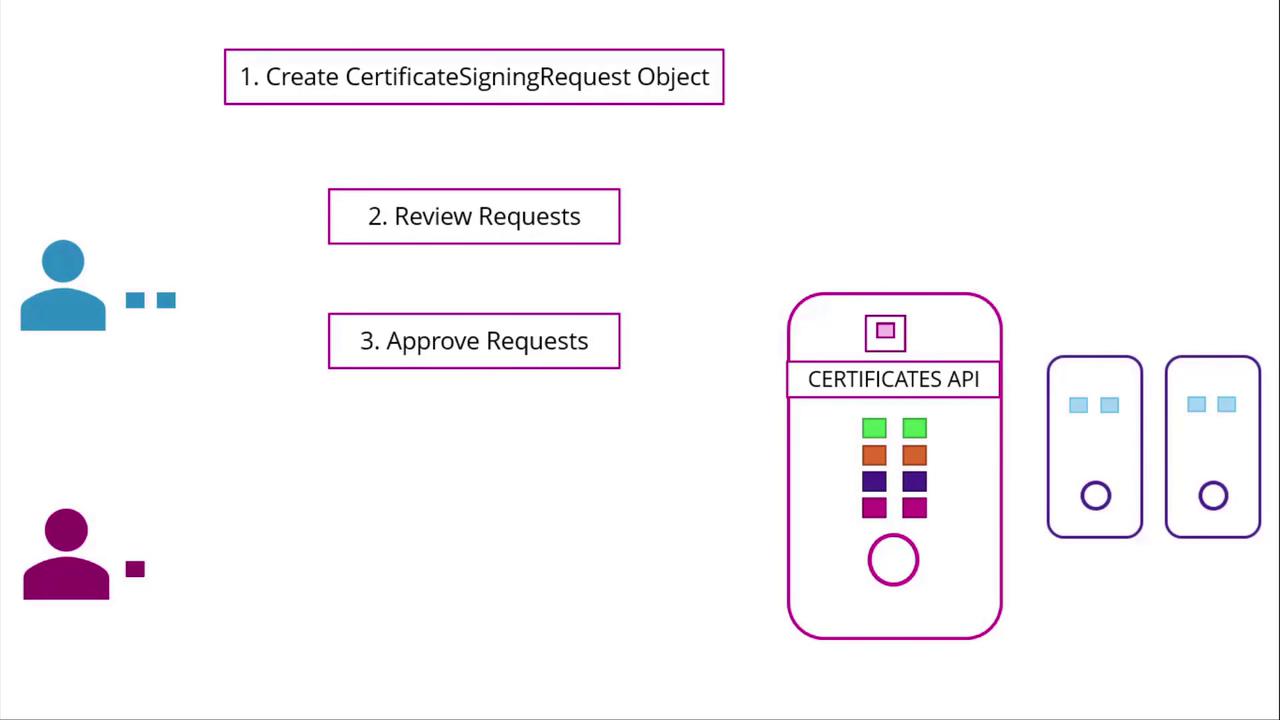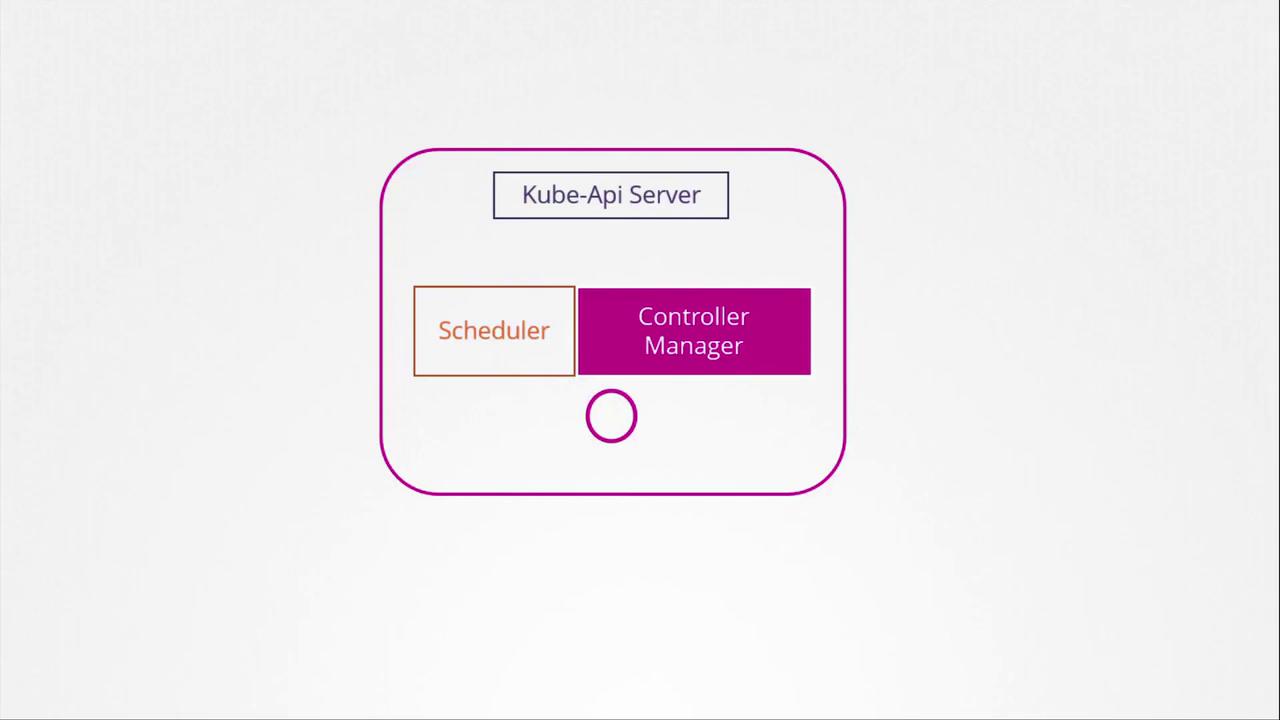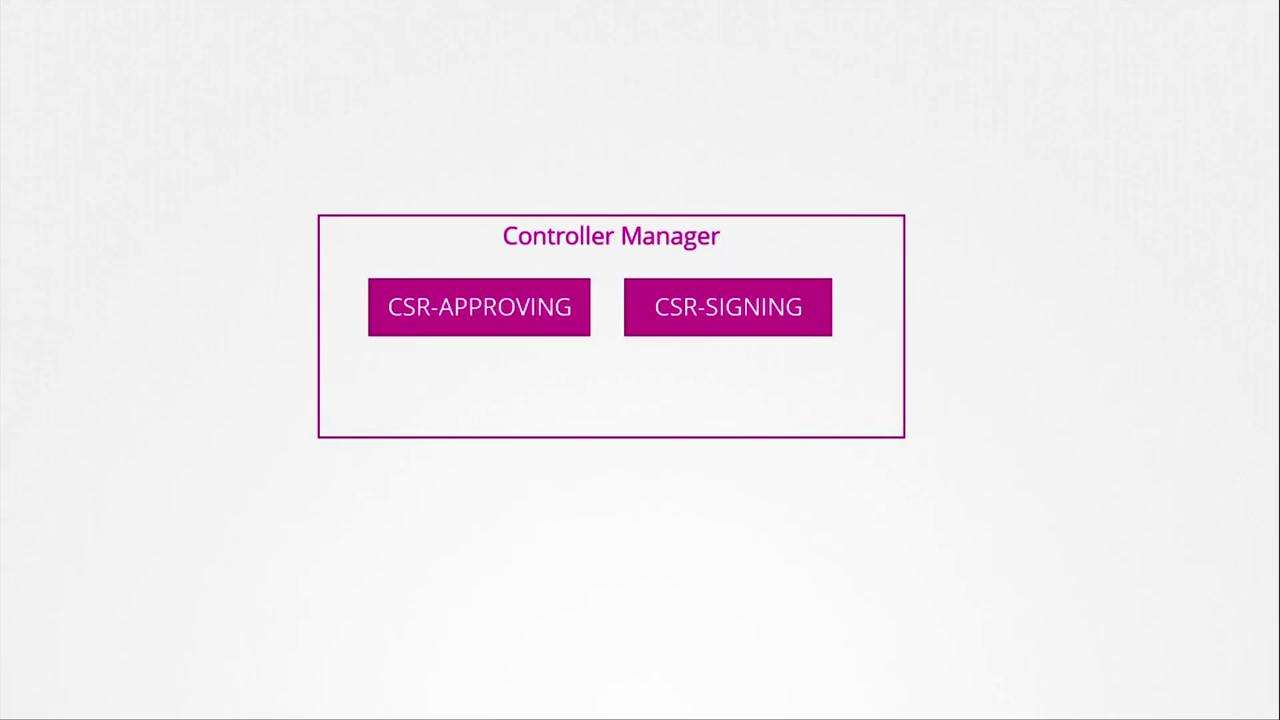CKA Certification Course - Certified Kubernetes Administrator
Security
Certificates API
This article explains how to manage certificates and introduces the Certificate API in Kubernetes. In a typical cluster setup, an administrator first configures a Certificate Authority (CA) server and generates certificates for the various components. Once the services are launched with these certificates, the cluster becomes operational. Initially, only one administrator has access via a personal admin certificate and key. However, as new team members join, each must obtain their own certificate and key pair to access the cluster.
The Certificate Lifecycle
When a new administrator joins, she generates her own private key and creates a certificate signing request (CSR). This CSR is then sent to the existing administrator. As the sole administrator, you review the CSR, sign it using the CA server's private key and root certificate, and return the signed certificate. The new admin now has a valid certificate and key pair to access the cluster. Since certificates have a defined expiration period, the process is repeated when they expire.
The Kubernetes API Server plays a pivotal role in the cluster but is not part of the Certificate Authority. The CA is comprised of only two files—a key and a certificate—generated during initialization. Because these files allow the signing of certificates and thus the creation of users with any privileges, they must be stored securely, typically on a dedicated CA server. In many implementations, the Kubernetes master node also serves as the CA server. For instance, the kubeadm tool creates and stores CA files on the master node.
Certificate Rotation Automation
As the number of users increases, manually signing certificate requests becomes impractical. Kubernetes addresses this challenge with a built-in Certificates API that automates CSR management and certificate rotation.
Managing Certificate Signing Requests (CSRs)
The Kubernetes Certificates API allows users to submit their CSRs via an API call, creating a CertificateSigningRequest object. Administrators can then review and approve these requests using kubectl commands. Once approved, Kubernetes signs the certificate using the CA's key pair. The signed certificate is then available for extraction and distribution to the requesting user.

Step 1: User Generates Private Key and CSR
A user creates a private key and generates a certificate signing request using the following command:
openssl genrsa -out jane.key 2048
The user then sends the CSR to the administrator.
Step 2: Administrator Creates a CSR Object
The administrator creates a CertificateSigningRequest object with a manifest file. In the manifest, the kind is set to CertificateSigningRequest, and the spec section includes the encoded certificate signing request (CSR must be encoded in base64). Below is an example manifest:
apiVersion: certificates.k8s.io/v1
kind: CertificateSigningRequest
metadata:
name: jane
spec:
expirationSeconds: 600 # seconds
usages:
- digital signature
- key encipherment
- server auth
request: LS0tLS1CRUdJTiBDRVJUSUZJQ0FURSBSRVFVRVNUUw0tLS0KTUl1Q1dEQ0NBVUFDQVFBd0V6RVJHQTFVdU0R6VjRkNHTQ0RzU0aU1yY3I0d11qYXl0c1RUVFRlQiVtNS0tLS0tLkRvd25nUIDhUnQ0dXJ0YW50YmlsZWdslNQZHYR0W1nNHh1RVFLdLtJPG0tLkFUTUJQS0w0UlRqS1JlTVUyZUl3bTJaSE44TG5NQ2czTWc9PQ==
Administrators can list pending CSRs with the following command:
kubectl get csr
The output may resemble:
NAME AGE SIGNERNAME REQUESTOR REQUESTEDDURATION CONDITION
jane 10m kubernetes.io/kube-apiserver-client [email protected] 10m Pending
Step 3: Approving the CSR
To approve the CSR, run:
kubectl certificate approve jane
After approval, Kubernetes signs the CSR with the CA key pair, and the certificate is embedded in the CertificateSigningRequest object's YAML output as a base64 encoded string. You can decode it using base64 utilities to view the plain text certificate.
Below is an example output of a CertificateSigningRequest object:
apiVersion: certificates.k8s.io/v1
kind: CertificateSigningRequest
metadata:
creationTimestamp: 2019-02-13T16:36:43Z
name: new-user
spec:
groups:
- system:masters
- system:authenticated
expirationSeconds: 600
usages:
- digital signature
- key encipherment
- server auth
username: kubernetes-admin
status:
certificate: L$0tL1CRUdJTiBDRVJUSUZJQ0FURS9tL0t1SURDakNDQWZLZ0F3SUJBZ0lVRmwyQ2wXYXoxalW5M3JNVisreFRYQYouW3dnd0RWpL1pJaHZjTkFRRUwkQkFBd0ZVUnRVMVhQTFRUVF4TUhM1ZpHkdVpMjxkF1RncweE9UQ1NVE14TmpNeU1EQmFgdGl0dY0ZFBl2ajNuSXY3eFd3I1Rm5u440c0t520vXukwTFM5V29ge1hHZdWCMlEZ2FOMVVMRFBXTVhjN09FVnVjSk1k4weRUVtR5tD11zWeHVjS1h6g1dV0pMediMUGbXYFKWVKWMVmBjRVRTY3dod2xiO1ND0kLS0tL1F0kQg0V5VElSGUNBVEUt
conditions:
- lastUpdateTime: 2019-02-13T16:37:21Z
message: This CSR was approved by kubectl certificate approve.
reason: KubectlApprove
type: Approved
The Role of the Controller Manager
Within the Kubernetes control plane, components such as the API Server, Scheduler, and Controller Manager work together. However, all certificate-related operations—such as CSR approval and signing—are managed by the Controller Manager.


The Controller Manager includes dedicated controllers for CSR approval and CSR signing tasks. Since signing certificates requires access to the CA's root certificate and private key, its configuration specifies the file paths to these credentials. For example, the Controller Manager’s configuration file might include settings like the following:
cat /etc/kubernetes/manifests/kube-controller-manager.yaml
spec:
containers:
- command:
- kube-controller-manager
- --address=127.0.0.1
- --cluster-signing-cert-file=/etc/kubernetes/pki/ca.crt
- --cluster-signing-key-file=/etc/kubernetes/pki/ca.key
- --controllers=*,bootstrapsigner,tokencleaner
- --kubeconfig=/etc/kubernetes/controller-manager.conf
- --leader-elect=true
- --root-ca-file=/etc/kubernetes/pki/ca.crt
- --service-account-private-key-file=/etc/kubernetes/pki/sa.key
- --use-service-account-credentials=true
This configuration demonstrates how the Controller Manager accesses the necessary CA certificates for signing new certificate requests.
Conclusion
In summary, Kubernetes simplifies certificate management through its built-in Certificates API, automating the CSR lifecycle and certificate rotation. This automation is essential for maintaining secure access as team sizes grow and certificates expire over time.
For further exploration, head over to the practice desk to experiment with the Certificates API and enhance your Kubernetes operations.
See you in the next article!
Watch Video
Watch video content
Practice Lab
Practice lab